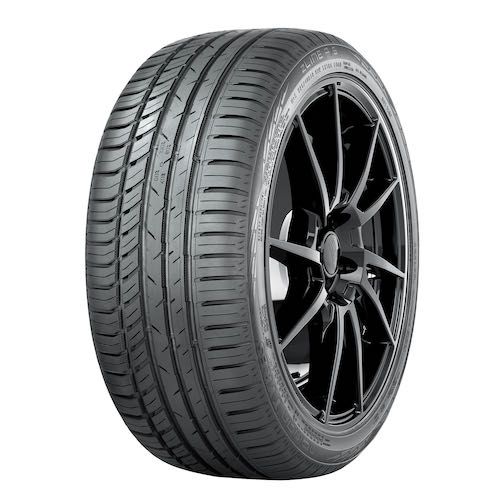Newer tire technologies help prevent hydroplaning. Innovations in tire manufacturing allow for better displacement of water, thereby helping to prevent hydroplaning. This technology is incorporated in both all-season tires and all-weather tires. They both have tread patterns with grooves to help evacuate water to avoid hydroplaning, which happens when the car rides up on a thin surface of water separating the tires and the pavement, causing a loss of traction.
All-season tires with this technology are the Nokian Tyres One, which allows for excellent hydroplaning protection with many innovations assuring water displacement to protect from the loss of traction, which can be pretty scary and dangerous. It also happens to be one of the biggest reasons for accidents in the summer. In addition, this tire comes with aramid sidewalls offering extra protection on rough roads and potholes. They even have a pothole protection warranty offering a free replacement if the tire is beyond repair. It is allowing the tires to disperse more water.
An all-weather tire with these innovations is the Nokian WR G4 all-weather tires. Innovations like the “Blade Grooves” can help route rain and slush away from the tire surface. Hydroplaning can occur both with water as well as with slush (melted snow). This is why the all-weather tires with the new “Coanda technology” with its tread blocks with curved, ramp-like design allow for an accelerated water flow or slush from the longitudinal grooves into the transverse grooves, helping to prevent hydroplaning from either water or slush. These properties are even maintained when the tires wear down.
Hydroplaning is the phenomenon when you have water on the road surface, and it leads to a layer of water being created between the wheels of the car and the road surface, thus leading to loss of traction. This loss of traction can prevent the vehicle from responding to control inputs. Besides investing in good quality tires, you should keep your tires properly inflated and replace tires when the tread reaches 5/32 inches. It is also important to reduce your speed on wet roads because the quicker you drive, the more difficult it is for the tires to disperse the water. Avoid standing water and puddles, don’t rely on cruise control; use your lower gears, no abrupt braking, avoid sharp or quick turns. If your car still ends up hydroplaning after all precautions, you need to take your foot off the brake, steer in the same direction as you are heading, and do not slam on the brakes under any circumstances.
Both all-season tires and all-weather tires have features to protect from hydroplaning. As long as the tires are in good shape with at least 5/32 inches of tread and adequately inflated, then the risk of hydroplaning is significantly reduced. It is, however, essential to stay prudent when driving in the rain. Always slow down, avoid puddles, keep your eyes on the road, avoid drastic turns or hard braking, and if possible, drive in a lower gear whenever possible.
For more information regarding all-season tires, visit: https://www.nokiantires.com/
